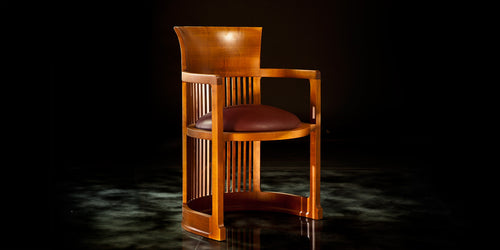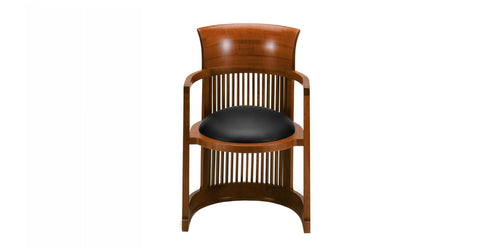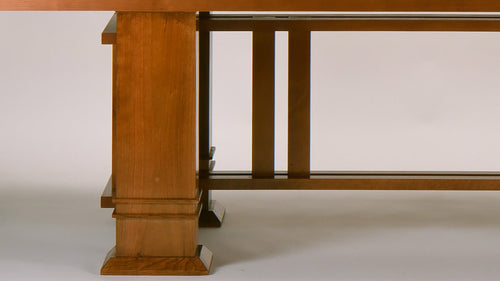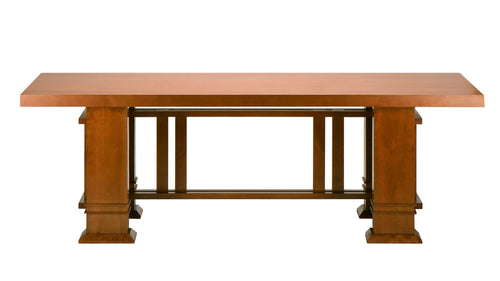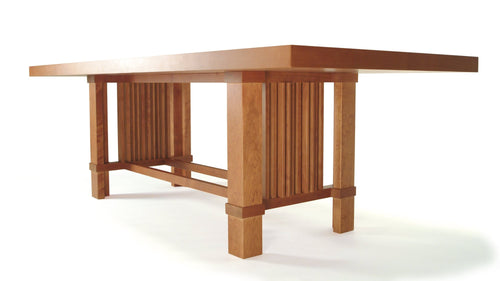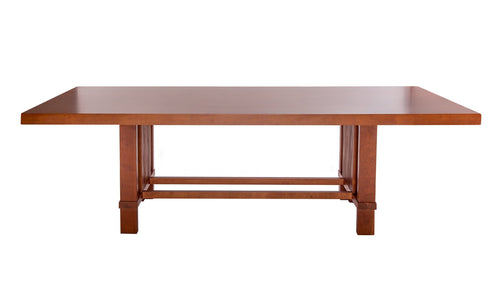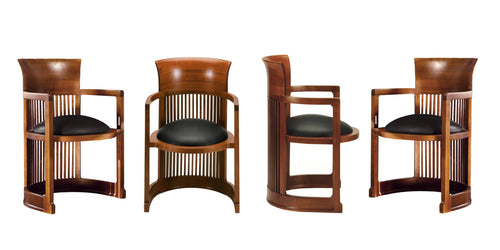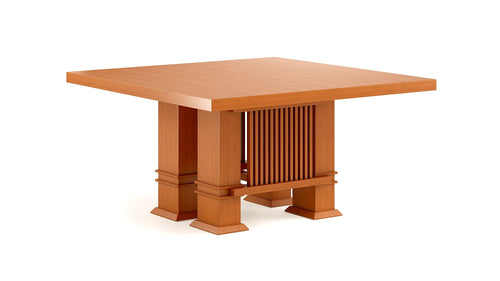Frank Lloyd Wright
F. L. Wright
(1867-1959)
A doctor can bury his mistakes; an architect can only instruct his client to cover them with creepers. Charismatic, elegant, eccentric, an authentic genius, the American Frank Lloyd Wright enjoyed a long, full-fledged career: he developed more than thousand designs of houses, buildings, churches, schools, libraries, bridges and museums, and also furniture pieces, lamps, table furnishings, fabrics and graphic arts. The mainstays of his architectural style are an absolute quest for simplicity – beyond all ornaments – and his relationship with nature, a source of inspiration in both form and choice of materials. An architectural design that seeks its resolution in a complete harmony of lines and spaces, later celebrated all over the world as “organic architecture”. Wright was profoundly tied to his country, the new world, and to the American pioneer spirit. This is why he chose not to seek his inspiration in the architectural traditions of old Europe, but rather in Japanese, Oriental and Indo-American forms. And while Europe was celebrating the advent of industrial materials, Wright preferred the natural qualities and authenticity of wood, declaring: “For man, wood is universally beautiful. Man loves the close bond he has with wood, and he wants to feel it in his hands, pleasant to the touch and to the eye.”
A doctor can bury his mistakes; an architect can only instruct his client to cover them with creepers. Charismatic, elegant, eccentric, an authentic genius, the American Frank Lloyd Wright enjoyed a long, full-fledged career: he developed more than thousand designs of houses, buildings, churches, schools, libraries, bridges and museums, and also furniture pieces, lamps, table furnishings, fabrics and graphic arts. The mainstays of his architectural style are an absolute quest for simplicity – beyond all ornaments – and his relationship with nature, a source of inspiration in both form and choice of materials. An architectural design that seeks its resolution in a complete harmony of lines and spaces, later celebrated all over the world as “organic architecture”. Wright was profoundly tied to his country, the new world, and to the American pioneer spirit. This is why he chose not to seek his inspiration in the architectural traditions of old Europe, but rather in Japanese, Oriental and Indo-American forms. And while Europe was celebrating the advent of industrial materials, Wright preferred the natural qualities and authenticity of wood, declaring: “For man, wood is universally beautiful. Man loves the close bond he has with wood, and he wants to feel it in his hands, pleasant to the touch and to the eye.”

